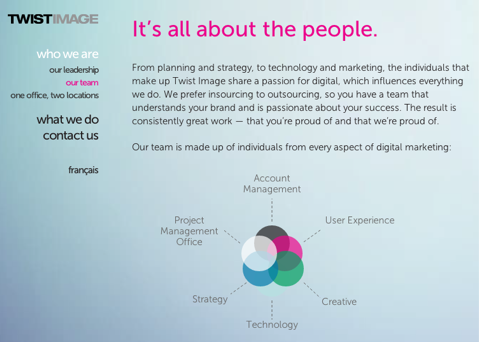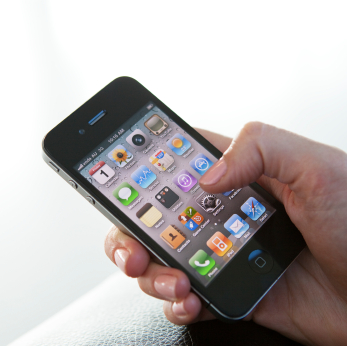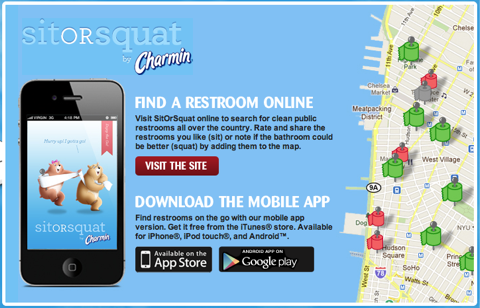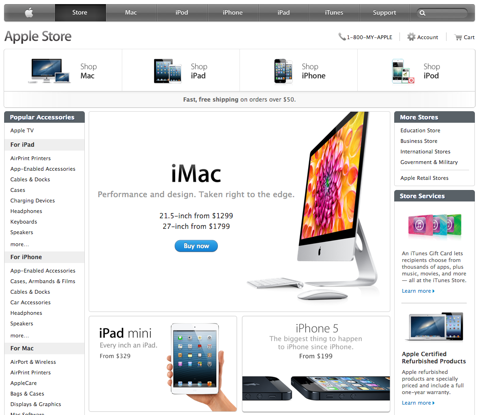Marketing Reboot? Are You Ready to Change?

Is your business ready to face the technological and sociological changes that are happening right now?
To learn why you need to consider rebooting the way you market in this rapidly changing world, I interview Mitch Joel for this episode of the Social Media Marketing podcast.
More About This Show
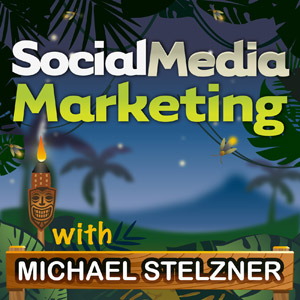
The Social Media Marketing podcast is a show from Social Media Examiner.
It's designed to help busy marketers and business owners discover what works with social media marketing.
The show format is on-demand talk radio (also known as podcasting).
In this episode, I interview Mitch Joel, author of the book Six Pixels of Separation and the podcast with the same name. His newest book is Ctrl Alt Delete: Reboot Your Business. Reboot Your Life. Your Future Depends on It.
Mitch shares how technology will change the way we market our businesses in the future.
You'll learn the most important trends and how they will impact your marketing.
Share your feedback, read the show notes and get the links mentioned in this episode below!
Listen Now
Podcast: Play in new window | Download
Here are some of the things you'll discover in this show:
Marketing Reboot
What's the business world going to look like for our young children, when they enter the workforce?
Mitch shares how the iPad has only been around for the last three and a half years, and so for us to even think about what life will be like in a decade is unfathomable.
He believes that in current business, with the catalyst of technology, we've gone through exponential growth. Mitch says that as human beings we find it difficult to understand this dramatic shift.
Since the iPad has come along, it has imploded the PC market.
Our children will know nothing but technology. It's changing the lives of people and the state of business.
Children today are growing up with social media technology. Image source: iStockphoto
Listen to the show to find out why Mitch questions why anyone would download content and keep it on a hard drive.
Why we need a reboot
In the preface to Mitch's new book, Ctrl Alt Delete, he says, "during this state of purgatory, many businesses will die and many jobs will disappear, but in the same breadth many businesses will thrive, many new businesses will be created, and many new jobs will be invented."
Mitch shares his story of when his agency, Twist Image, first started out in 2000. The idea was to create a modern marketing agency focused on technology and connectivity.
You'll discover what type of people they now hire compared to back then and see how the acceleration has kicked in over the last 5 years.
Twist Image now hires for positions that didn't exist when they first started.
As far as education goes, Mitch feels that we're not educating young people properly. He believes that we're not setting up an infrastructure for the world as it exists.
As a professional marketer, you'll need to look at how we connect with things, engage with brands and engage in our lives.
Mitch explains what he means by reboot and how marketing professionals are not grasping it. They tend to still hold onto the old ways in which they buy, sell, create and engage with media.
You'll discover why Mitch believes the book is a wake-up call and why it's not forward-looking.
Listen to the show to hear the five movements that have already happened that have shaped business and changed the way we work.
How has the seemingly ubiquitous adoption of social media led to the need for businesses and marketers to change?
Mitch feels the most important element is the intrinsic connection we now have.
For example, when you see two young people shopping in a mall, they aren't just two good prospects for your store—they're more like 1,002 prospects. Young people today have about 500 connections on Facebook, where they chat, share and text. They create a connected society that we've never had before.
Consider the potential reach of your customers. Image source: iStockphoto
Mitch feels that social media, a platform of connectivity, has been a major factor. The adoption has been so intense that he's not sure if marketers or even the people who built the platform understand.
You'll hear an example of marketing optimization and how for a nominal amount of money, you could learn so much by testing things on your site every day. He's amazed that marketers haven't fully embraced this.
You'll learn the challenges marketers face and what they're afraid of.
Another massive opportunity for marketers is programmatic buying. Mitch explains how we have now moved to a technological platform of real time and what this means for marketers.
Listen to the show to find out why the mobile frontier is huge and how it's a whole other opportunity for people.
Do you see us entering another stage that's going to be on par with the introduction of the world wide web?
Mitch believes that we are currently spiking in terms of mobile and touch. He feels that the things you can do with these are going to make the web, ecommerce and social media cumulatively pale in comparison.
It's scary for marketers because when you have just got something figured out, something new comes along.
Mitch still sees people now who worry about their website, ecommerce, transactions and social, but these are things that have already happened. We also have to remember that mobile has already happened too.
We live in a world right now where we can see a decline in PC sales. There are 1.7 billion-plus connected mobile devices, compared to 600 million PCs.
Listen to the show to hear why Mitch believes we're living in a one-screen world.
What marketers need to think about when it comes to utility
Mitch talks about how utility is a new area to watch and that we currently live in a world that he calls the narcissistic web.
You'll hear an example of the narcissistic web, when it comes to having an app about your brand. There's data to show that 25% of branded apps get downloaded and used once, then never again. And there's other data where it's upwards of 20% of branded apps that get downloaded and never opened.
But you can't rely on this data because what they are talking about are thesenarcissistic apps. These are apps that suck.
We use apps day in and day out that provide utility and are of value to us.
You'll hear Mitch give an example of a Procter and Gamble app called SitorSquat and how because of this he has become a Charmin loyalist.
SitorSquat is a great utility app provided by Charmin.
When Mitch talks about utility, he sees it both as physical and digital. It's a squishiness of the two.
You'll learn why content is a functional utility and why it's important to question if we can create with true authenticity.
Listen to the show to hear an example of how Lego uses the physical engagement of utility in their stores.
In Mitch's book, he mentions a dinner conversation with Sherry Turkle, author ofAlone Together: Why We Expect More from Technology and Less From Each Other.
Mitch shares the story from this discussion about whether technology is making us better. In today's world, people love their smartphones and their connected devices.
Mitch came to realize that we have a saying in our world, "Time to Device." Basically from when you wake up in the morning, what is your time to device? For most people, the first thing they touch is their phone and it's the last thing they touch before bed. We really love the connectedness that we have.
Listen to the show to find out when Mitch came to realize that there is another side to this.
What's a "perpetual entrepreneur" and why is it important?
Mitch explains that the idea of becoming a perpetual entrepreneur was more of a call to arms—just because you did something great, it doesn't mean you're entitled to greatness.
You'll discover why Apple employs perpetual entrepreneurs and why there aren't many companies out there that can ascend to that type of position.
Apple employs perpetual entrepreneurs.
When you look at Blackberry, they had a very good idea when it came to secure, mobile email. The timing of it was perfect and they managed to create an entire market around it. You'll find out why this didn't entitle them to the same future as Apple's.
Mitch says that we shouldn't compare the two. The argument he makes in the book is to think like the perpetual entrepreneur. Always think how your industry is evolving.
Listen to the show to find out how the perpetual entrepreneur would think when it comes to the mobile experience.
As marketers, how should we market ourselves in this new era?
Mitch released his book Six Pixels of Separation in 2009, and he believes there is still a lot of stuff in there that resonates today.
As a marketer you need to start thinking about what your plan is now. Remember these things aren't fads. The web, mobile, social, local and hyperconnectivity aren't going away. Purgatory is where we're at. We know this stuff is happening and we're not doing anything about it.
Marketers need to start a plan. Image source: iStockphoto
Mitch thinks that's what makes the reboot necessary. You need to go back and look strategically at what your business is and how it can best connect.
Listen to the show to hear what Seth Godin once said to Mitch about the secret sauce.
Other Show Mentions
I wanted to share with you that there are 21,000 people who listen to this podcast, which just blows my mind. I've published a podcast every single week for the last 8 months and it's been super-rewarding.
But I know there's a lot of people out there who are missing out on this podcast. Anybody you know who is a marketer or has a business that could benefit from this podcast? I would love it if you would be willing to help spread the word.
You can head over to iTunes, leave a rating, write a review and subscribe or simply click here now to post a tweet.
If you want to be part of a future podcast, I would strongly recommend you try out our voicemail hotline.
Call in and leave your social media–related questions for us and we may include them in a future show.
Key takeaways mentioned in this episode:
[Reposted with Ralph Paglia's iPad]






